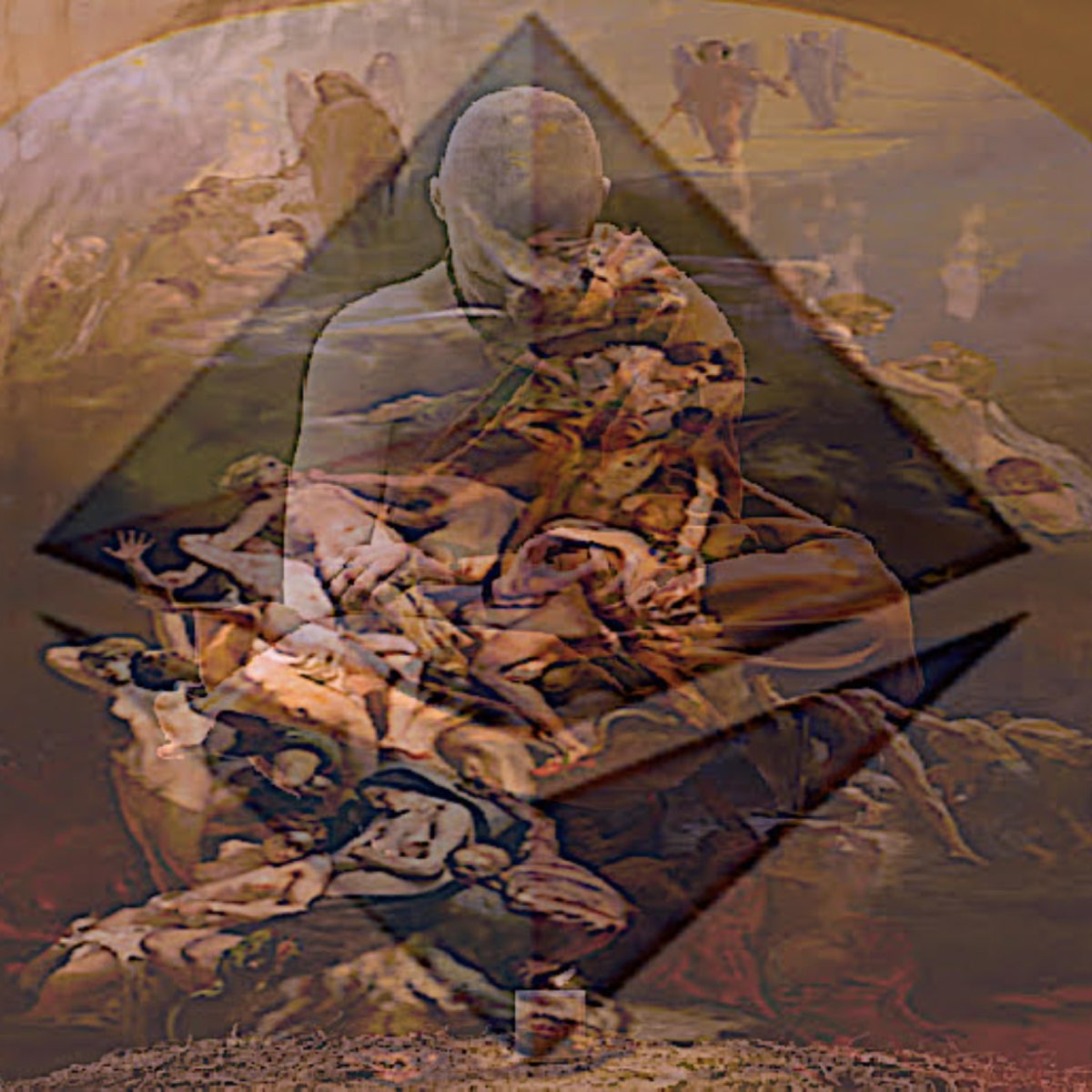French Acadian Song catalogue on world music scene via Cajun Dead et le Talkin`Stick
A new Acadian song lyric style movement is emerging that refuses to be confined to the nostalgic representations. Cajun Dead et le Talkin’ Stick.


French Canadian music has long been synonymous with vibrant fiddle tunes, kitchen parties, and jovial celebrations of cultural pride. However, a new movement that refuses to be confined to these nostalgic representations is emerging. Cajun Dead et le Talkin’ Stick, the Appalachian-inspired song catalogue of contemporary artist and world music via songwriting lyric project of prolific and productive Claude Edwin Theriault, is charting a different course.
Infused with folk storytelling tradition and the freewheeling spirit of Grateful Dead-style jam bands, Theriault’s music offers a stark, unfiltered portrayal of the struggles of ghettoized rural Acadian communities in Atlantic Canada. As his work gains recognition on the World Beat music scene, it is clear that his artistic vision is far removed from the Acadian pride narratives typically found in tourist brochures.

The Appalachian Influence on Acadian Soundscapes
One of the defining elements of Cajun Dead et le Talkin’ Stick is its Appalachian-inspired approach to Acadian storytelling. Drawing on the modal melodies, minor pentatonic scales, and stripped-down instrumentation of early mountain music, Theriault reinterprets traditional French Canadian music through a raw and emotive lens. This fusion brings Acadian narratives into a larger global folk tradition, positioning them alongside the socially conscious storytelling in American blues, Irish ballads, and Delta folk songs.
Unlike the celebratory jigs and reels that dominate mainstream Acadian music, Theriault’s compositions carry the weight of lived experience. His lyrics delve into themes of displacement, economic hardship, and the erosion of local culture, mirroring the concerns of Appalachian musicians who have long sung about coal mining towns, labour struggles, and rural poverty. This cross-pollination of musical styles and social commentary makes Cajun Dead et le Talkin’ Stick a natural fit for the World Beat music scene.
From Ghettoized Rural Acadian Struggles to Global Resonance on the Amazon Music Stream Platform
Theriault’s work is a stark counterpoint to the sanitized version of Acadian culture promoted by regional tourism boards. Rather than celebrating historic resilience through folkloric dance and costumes, his lyrics highlight the modern-day struggles of Acadian communities—unemployment, addiction, the impact of gentrification, and cultural isolation. In many ways, his music serves as a rallying cry for a population often overlooked in discussions about economic development and artistic preservation.
By refusing to sugarcoat the realities of contemporary Acadian life, Theriault has drawn the attention of global audiences who recognize similar struggles in their own cultural landscapes. His work resonates with Indigenous musicians addressing displacement, Latin American folk artists chronicling political strife, and African singer-songwriters fighting against economic disenfranchisement. As a result, Cajun Dead et le Talkin’ Stick is finding its place within a broader global folk movement that champions storytelling as a means of resistance and preservation.
World Beat Recognition and the Acadian Music Industry’s Indifference
As Theriault’s music gains traction on the international stage, it has been met with mixed reactions at home. World Beat audiences appreciate the depth of his work, drawing comparisons to the protest music of Woody Guthrie, Bob Dylan, and even Leonard Cohen's poetic melancholy. Meanwhile, the local Acadian music industry remains largely indifferent to his approach, if not outright hostile.
Why? His subject matter does not align with the carefully curated image of Acadian culture, which dominates regional festivals and arts funding initiatives. His lyrics don’t evoke the cheerful nostalgia of a bygone era; they hold up a mirror to the systemic issues that continue to plague Acadian communities. While international audiences embrace the honesty and rawness of his work, local industry gatekeepers dismiss it as too dark, too political, or simply too real.
Spite and Jealousy: The Cold Shoulder from Local Artists
Perhaps the most telling reaction to Theriault’s success is the cold shoulder he receives from local Acadian musicians and artists. While some may genuinely disagree with his artistic direction, others seem motivated by something more personal—spite and jealousy. His ability to garner global recognition for a brand of Acadian music largely ignored within his community is a bitter pill to swallow for those who have spent years catering to the limited tastes of local audiences and government-funded cultural initiatives.
There is an unspoken rule in many insular artistic communities: don’t rock the boat. Those who challenge the status quo often find themselves ostracized, and Theriault is no exception. By refusing to conform to the expectations of what Acadian music “should” sound like, he has inadvertently exposed the limitations of an industry more interested in maintaining a marketable image than fostering true artistic expression. Yet, as history has shown, it is often the outsiders who push a genre forward. Whether or not his peers acknowledge it, Theriault’s work does precisely that.

Appalachian-inspired folk for folk music.
FAQs
1. What makes Cajun Dead et le Talkin’ Stick different from traditional Acadian music?
Unlike traditional Acadian music, which is often celebratory and nostalgic, Cajun Dead et le Talkin’ Stick explores contemporary social issues Acadians face in rural Atlantic Canada. It blends Appalachian folk elements with introspective storytelling, setting it apart from mainstream Acadian musical traditions.
2. Why is Theriault’s music gaining traction on the World Beat nusic scene?
His music resonates with international audiences because it addresses universal economic struggle, cultural isolation, and resilience. By fusing Acadian narratives with global folk traditions, he has positioned his work within a broader movement of socially conscious storytelling.
3. How does Appalachian music influence Theriault’s sound?
Appalachian music’s minor key melodies, unvarnished vocal delivery, and storytelling traditions deeply inform Theriault’s compositions. This influence gives his work an emotional depth that aligns with other marginalized communities' folk and blues traditions worldwide.
4. Why do local Acadian artists and industry figures seem to reject Theriault’s music?
Many local artists and industry leaders prefer to promote a more palatable, tourist-friendly version of Acadian culture. Theriault’s stark, unfiltered narratives challenge this image, making him a disruptive force in an industry that values marketability over authenticity.
5. What does Theriault’s success say about the future of Acadian music?
His growing recognition suggests that Acadian music has the potential to evolve beyond its traditional confines. By embracing global influences and addressing contemporary issues, Acadian artists can connect with wider audiences and ensure the culture’s relevance in an ever-changing musical landscape.
Claude Edwin Theriault’s Cajun Dead et le Talkin’ Stick proves that Acadian music doesn’t have to be stuck in the past. While the local industry may continue to shun his work, international audiences recognize its raw honesty and cultural significance. His music is not about selling a postcard version of Acadia; it is about giving voice to those who have been overlooked for too long. And in doing so, he is placing French Canadian music onto the world stage in a way that no kitchen party ever could.


